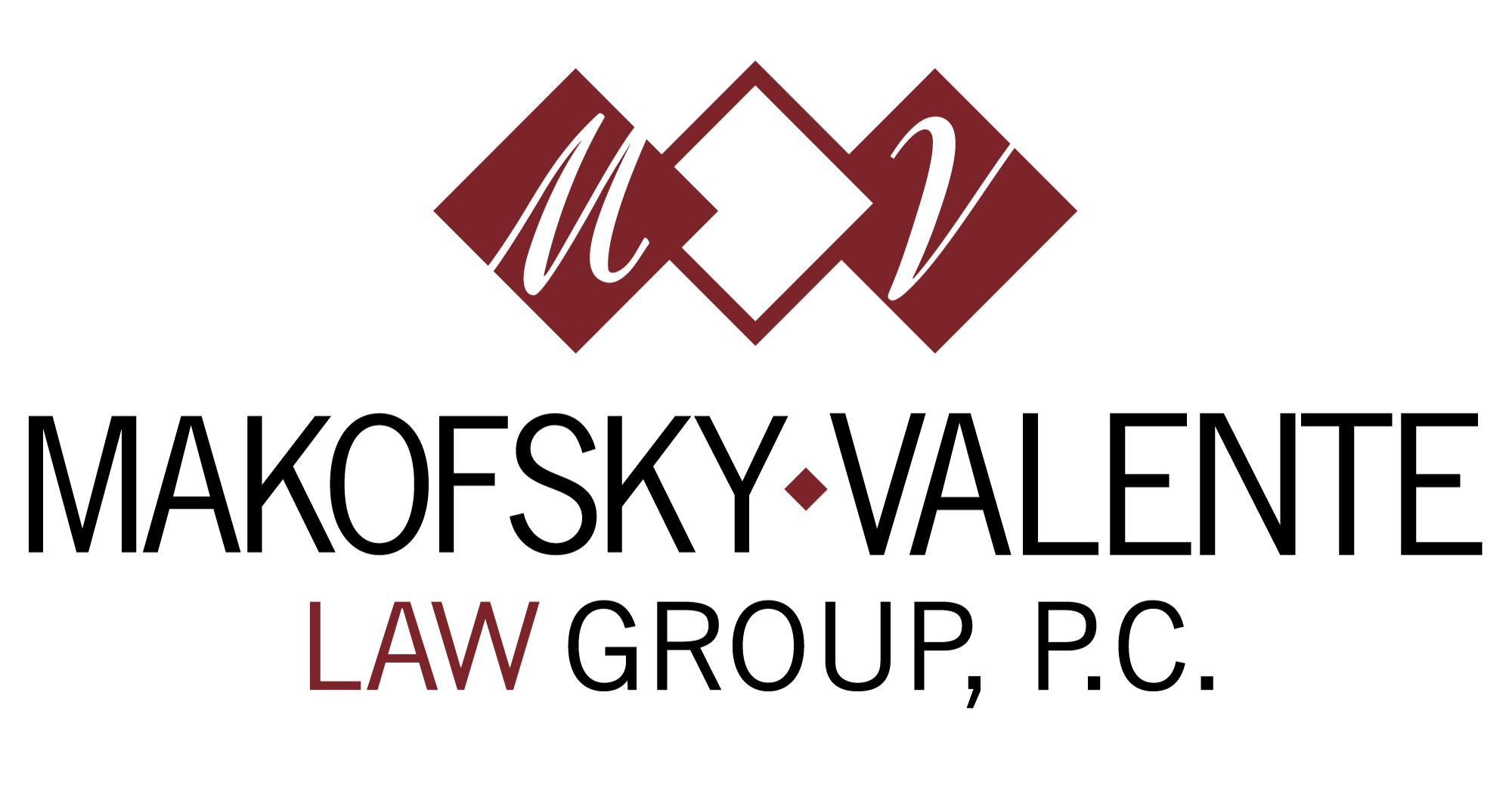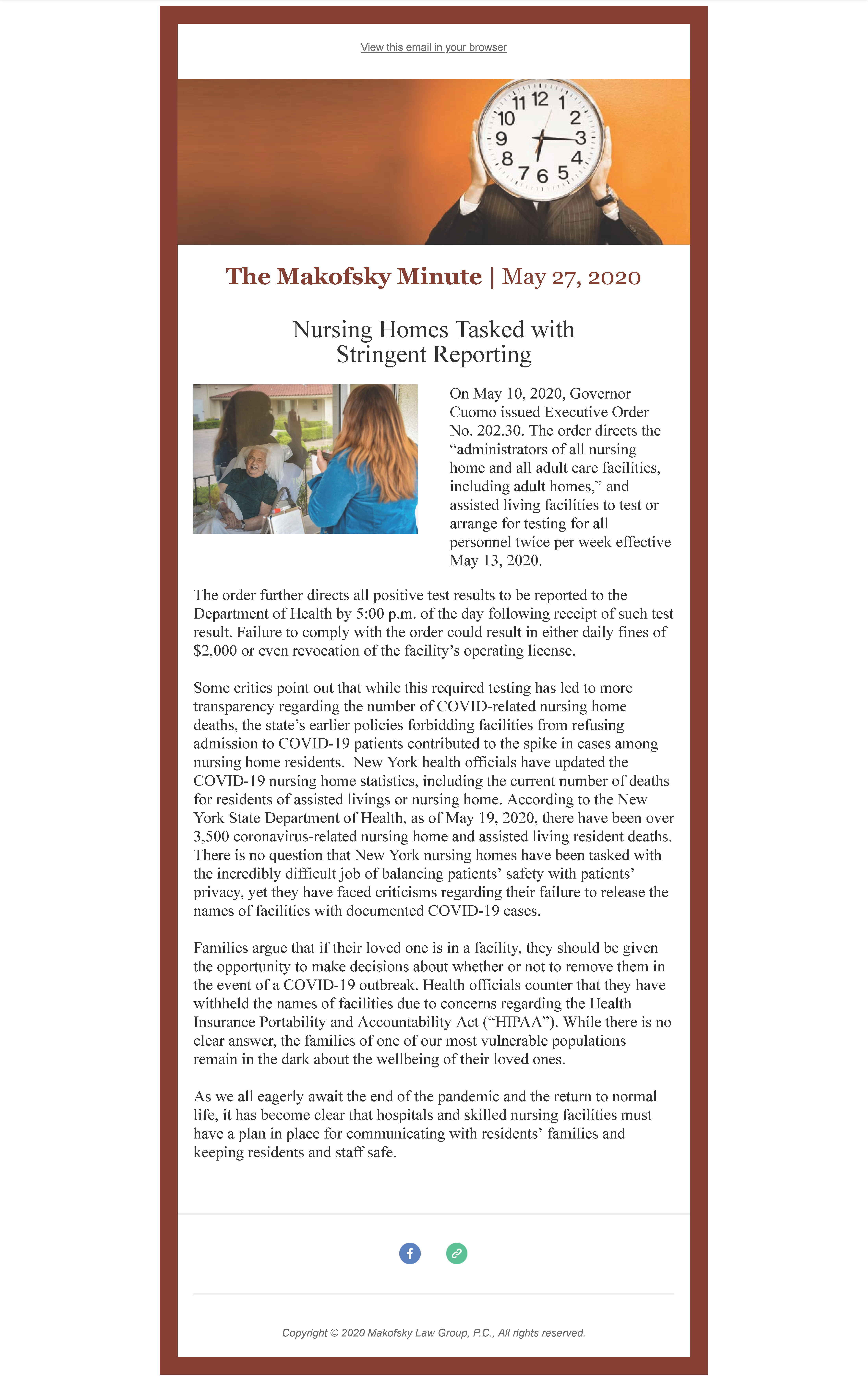On May 10, 2020, Governor Cuomo issued Executive Order No. 202.30. The order directs the “administrators of all nursing home and all adult care facilities, including adult homes,” and assisted living facilities to test or arrange for testing for all personnel twice per week effective May 13, 2020. The order further directs all positive test results to be reported to the Department of Health by 5:00 p.m. of the day following receipt of such test results. Failure to comply with the order could result in either daily fines of $2,000 or even revocation of the facility’s operating license.
Some critics point out that while this required testing has led to more transparency regarding the number of COVID-related nursing home deaths, the state’s earlier policies forbidding facilities from refusing admission to COVID-19 patients contributed to the spike in cases among nursing home residents. New York health officials have updated the COVID-19 nursing home statistics, including the current number of deaths for residents of assisted livings or nursing homes. According to the New York State Department of Health, as of May 19, 2020, there have been over 3,500 coronavirus-related nursing home and assisted living resident deaths. There is no question that New York nursing homes have been tasked with the incredibly difficult job of balancing patients’ safety with patients’ privacy, yet they have faced criticisms regarding their failure to release the names of facilities with documented COVID-19 cases.
Families argue that if their loved one is in a facility, they should be given the opportunity to make decisions about whether or not to remove them in the event of a COVID-19 outbreak. Health officials counter that they have withheld the names of facilities due to concerns regarding the Health Insurance Portability and Accountability Act (“HIPAA”). While there is no clear answer, the families of one of our most vulnerable populations remain in the dark about the wellbeing of their loved ones.
As we all eagerly await the end of the pandemic and the return to normal life, it has become clear that hospitals and skilled nursing facilities must have a plan in place for communicating with residents’ families and keeping residents and staff safe.



